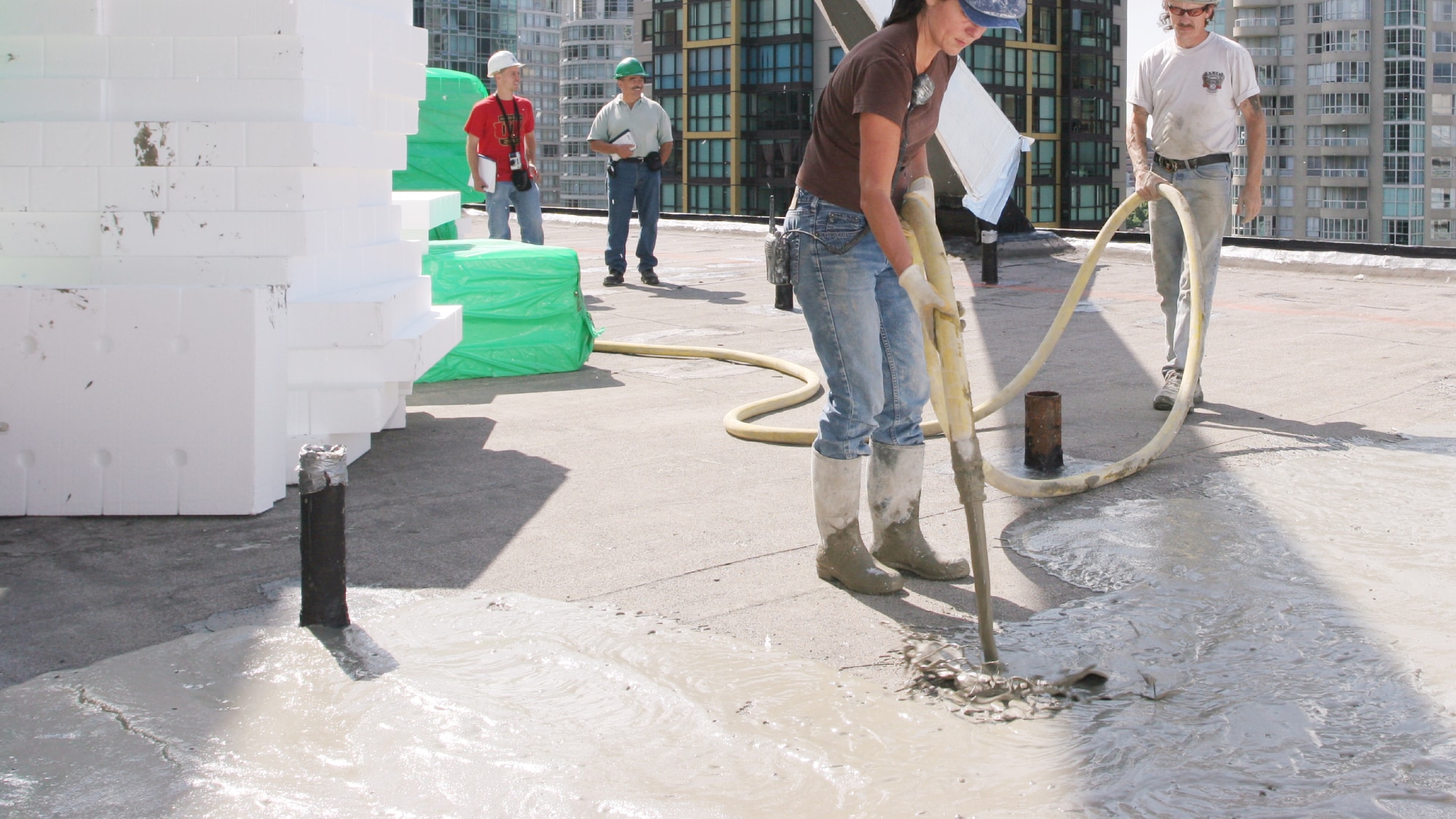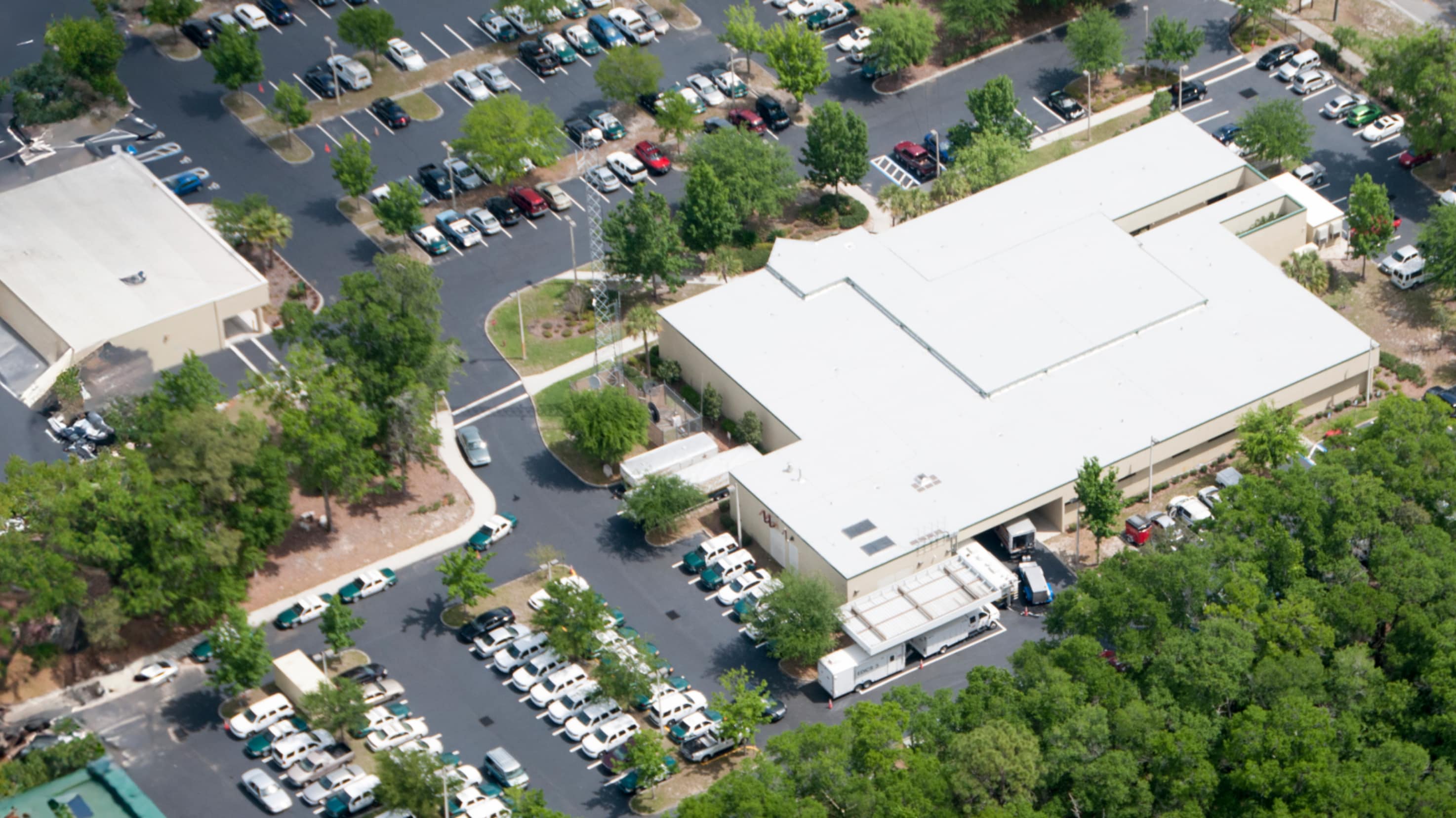

What is lightweight insulating concrete?
Introduction to lightweight insulating concrete
Benefits of LWIC
How to install


Franklin Bay Meadows

Alachua County Communications and Emergency Center

Dougherty County Jail

Lightweight insulating concrete versus rigid insulation
Types of lightweight insulating concrete systems
Sustainability with lightweight insulating concrete

Reusable insulation

Durable roof systems
Frequently Asked Questions
What are the types of LWIC and how are they used?
Siplast Lightweight Insulating Concrete is available in four mix designs: ZIC, NVS, Insulcel, and Zonocel. The four designs represent a range of compressive strengths, allowing a choice of system based on substrate and project circumstances. Each design encapsulates Insulperm Insulation Board in insulating concrete. This provides fire protection, prevents air infiltration, and creates a solid, monolithic insulated deck.
What is the Insulcel RT System and how does it work?
The Insulcel RT System, developed approximately two decades ago, helped revolutionize the wind uplift capabilities of modified bitumen systems in the Florida and Puerto Rico markets. One of the remarkable advantages of this system is its fastener-free design. Instead of relying on traditional methods of attachment like fasteners, it leverages asphaltic pellets that bond directly to the surface.
In this system, an asphalt pellet is mechanically dispersed onto the uncured surface. Once the system cures, the pellets are heated with a torch, causing them to expand and enhance the bond of the venting base ply and attaching to the Insulcel by acting as mini-fasteners. This process eliminates the need for conventional fasteners, simplifying the installation process. Insulcel RT System can be applied over various substrates such as slotted and non-slotted metal decks, structural concrete, vapor barriers, or properly prepared existing BUR roofs.
How does the temperature of a roof membrane affect its aging rate?
Raising the temperature of a roof membrane by 18 degrees Fahrenheit doubles its aging rate. Therefore, maintaining a cooler temperature for the roof membrane can potentially extend its lifespan.
How does LWIC contribute to keeping the roof membrane cooler?
LWIC can help maintain the roof membrane's cooler temperature by absorbing a portion of the energy. Siplast coined this absorption process as the “mass effect”.
How does LWIC impact aging of roof membranes?
The mass of the LWIC system plays a crucial role in slowing down the aging process of roof membranes. By having the LWIC topping placed above the Insulperm Board, the LWIC can absorb some of the energy that would otherwise impact the roof membrane directly. This absorption can help reduce stress on the membrane over time, potentially prolonging its lifespan.
Have more questions? Click to read our FAQ! Read More










